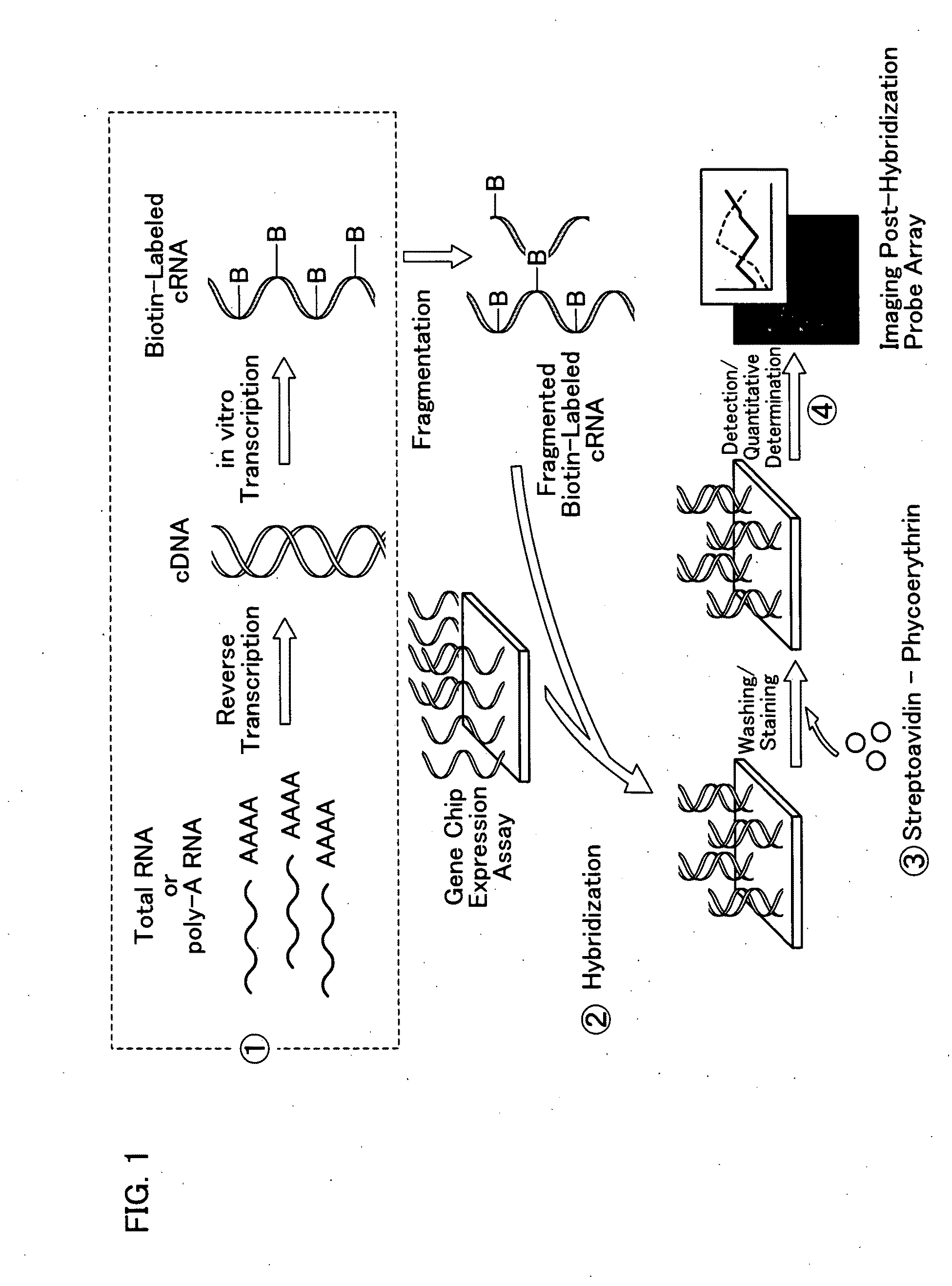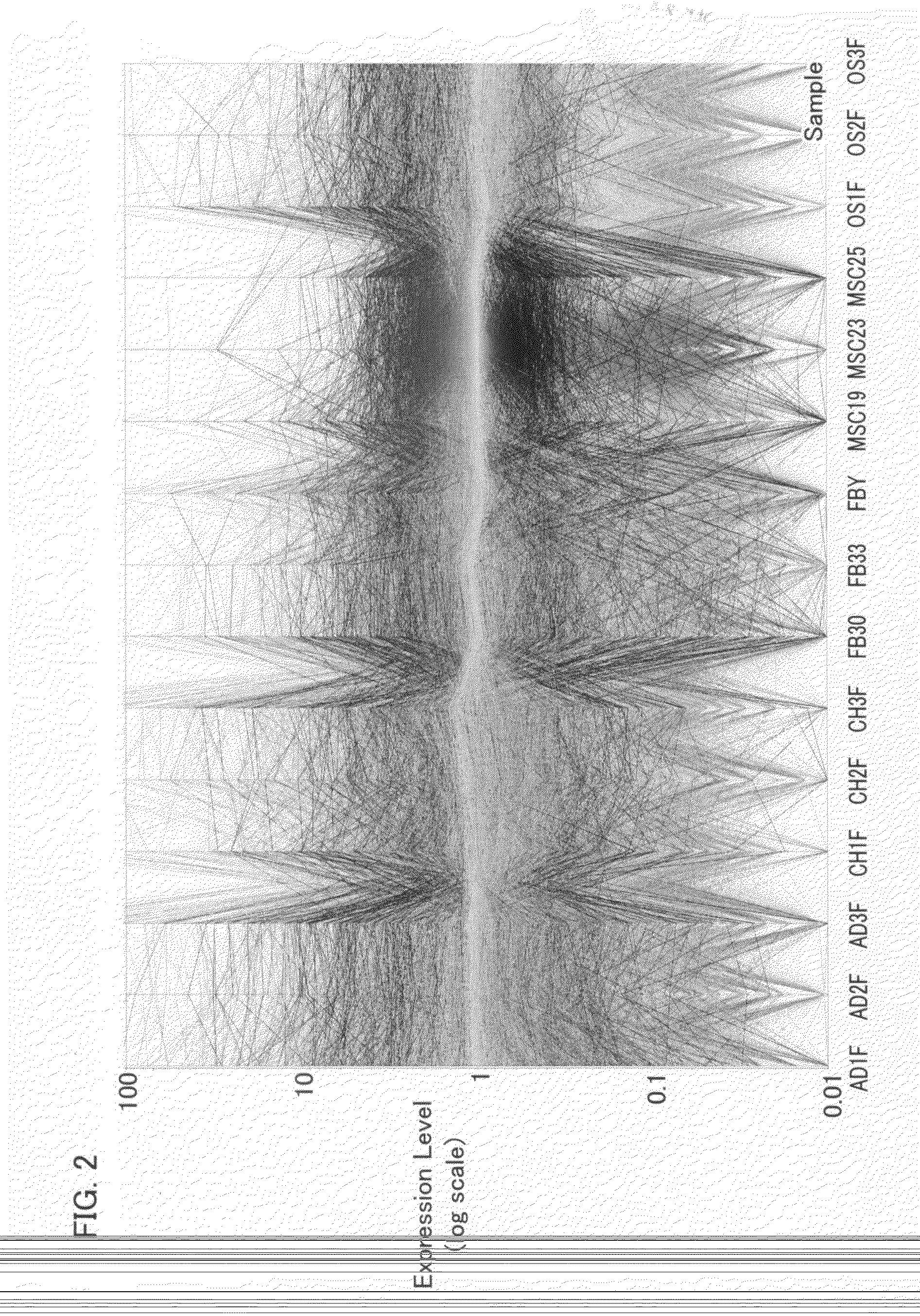Method for Distinguishing Mesenchymal Stem Cell Using Molecular Marker and Use Thereof
a mesenchymal stem cell and molecular marker technology, applied in the field of detecting, distinguishing, and separating mesenchymal stem cells, can solve the problem that the art is not enough
- Summary
- Abstract
- Description
- Claims
- Application Information
AI Technical Summary
Benefits of technology
Problems solved by technology
Method used
Image
Examples
Embodiment Construction
[0056]The present invention makes it possible to construct a method of effectively distinguishing and separating mesenchymal stem cells from other cell groups such as connective tissue cells (such as fibroblasts, osteoblasts, chondrocytes, adipose cells) etc. by using a DNA microarray to detect, as a distinguishing marker, a gene that is specifically expressed in undifferentiated stem cells. Use of the present invention makes it possible to perform a qualitative inspection of mesenchymal stem cells multiplied in vitro (on whether the mesenchymal stem cells have differentiation ability or not). This contributes to the practical application of the regenerative medicine using mesenchymal stem cells.
[0057]In the following, characteristic features of the present invention, that is, a method of distinguishing mesenchymal stem cells will be described firstly together with explanation on distinguishing / separating marker, microarray, and antibody to be used in the method. Finally, various ap...
PUM
 Login to View More
Login to View More Abstract
Description
Claims
Application Information
 Login to View More
Login to View More - R&D
- Intellectual Property
- Life Sciences
- Materials
- Tech Scout
- Unparalleled Data Quality
- Higher Quality Content
- 60% Fewer Hallucinations
Browse by: Latest US Patents, China's latest patents, Technical Efficacy Thesaurus, Application Domain, Technology Topic, Popular Technical Reports.
© 2025 PatSnap. All rights reserved.Legal|Privacy policy|Modern Slavery Act Transparency Statement|Sitemap|About US| Contact US: help@patsnap.com


